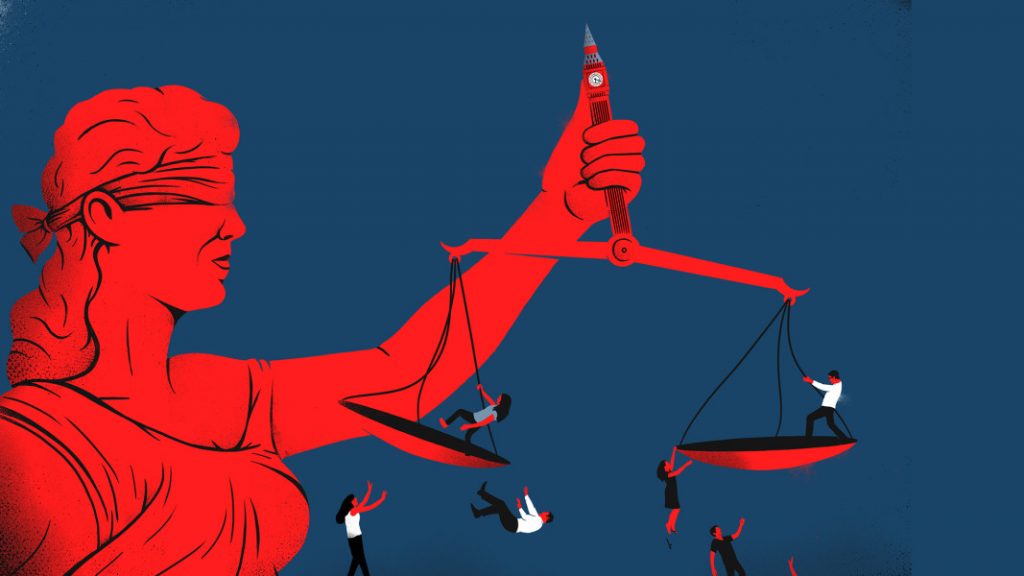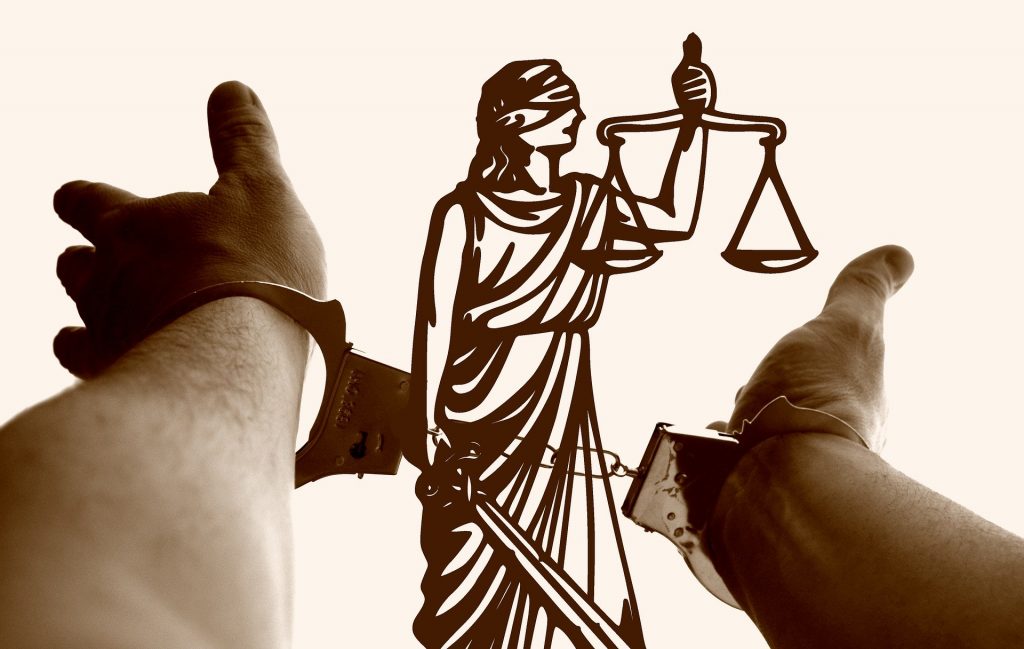
The administration of Criminal Justice in India is based on the legal framework established by the Britishers during the colonial period. It follows the adversarial justice system wherein the judges hear both parties in a case and act as an impartial adjudicator to achieve justice for individuals and society.
With the recognition of International law and human rights law on a global level, the current scenario has changed in the administration of the criminal justice system, which emphasizes the protection of rights of both the offender and the victim. There is no doubt that the existing legislation concerning criminal justice, such as the Indian Penal Code, 1860, the Code of Criminal Procedure, 1973, the Indian Evidence Act, 1872, and various other Acts prescribing punishment for penal offenses are adequate but also require changes to better equip with the current times and fulfill the objectives and principles of law.
Scales of Justice – History and Significance
The modern-day legal system of the West used the symbol of scales of justice to symbolize the balance between truth and fairness. It is often depicted as held by the Roman goddess of Justice, known as the Lady Justice, another common representation of modern Western law. Sometimes, she is shown as holding a sword and the scales in flowing robes and a blindfold in the different legal systems. Her sword represents the power of justice. The expression justice is blind is derived from Lady Justice’s use of a blindfold.
All across the world, the symbol is an emblem of the ideals and values fundamental to the law aspired by the judicial system. It also encompasses the concept of balance between support and opposition, as each side of the scale depicts one side of the case before a court of law. The scales tilt on one side depending on the evidence and arguments presented with the Lady Justice responsible for weighing the two to arrive at a just and fair decision. It also reminds the nature of duty a lawyer, judge, and all those responsible for dispensing justice have in a legal system.
Analyzing the extent to which the law balances the rights of the Offender and the Victim

Criminal justice aims to prevent and control crime, maintain public order and peace, protect the rights of victims and those in conflict with the law, punish and rehabilitate those found guilty of committing crimes, and protect life and property from crime and criminality in general. According to the Indian Constitution, it is the primary responsibility of the state. In India, penal philosophy has recognized the notions of crime prevention, treatment, and rehabilitation of convicts, which have been reaffirmed in several Supreme Court decisions.
There is no particular law or framework that provides provisions for protecting the offender’s rights in India. Certain constitutional safeguards and procedural rights can be claimed under the Indian Constitution and the Code of Criminal Procedure, 1973. These fundamental rights are granted to every person, regardless of whether or not a person is charged with an offense
Ei incumbit probatio qui dicit, non qui negat
The presumption of innocence states that a person is considered innocent until he is found guilty of the offense. Traditionally, this legal principle was expressed in the Latin maxim “Ei incumbit probatio qui dicit, non qui negat”, which translates to “the burden of proof is on the one who declares, not on one who denies”. It puts the burden of proof on the prosecution to prove the guilt of an offender beyond reasonable doubt by presenting compelling evidence during trial before the court. It is considered one of the cardinal principles of criminal law which are important for providing rights to an accused.
Rights of the Offender

The U.S Supreme Court, in the landmark case Miranda vs. Arizona, pronounced the Miranda rights, which provides rights to an accused person to remain silent under arrest and be represented by an attorney before a trial court. If the accused cannot get a lawyer, it is the state’s responsibility to provide free legal aid. The same legal principle has been reiterated in the famous Indian case, D.K Basu vs. State of West Bengal. The Court gave specific guidelines to be followed by police while making an arrest. It casts a duty upon the arresting officer to inform an accused of the grounds of arrest or detention. Article 22(1) of the Constitution also states that a person cannot be arrested or detained without informing him of such arrest or detention grounds.
Further, Article 21 says that a person can only be deprived of their freedom and personal liberty through a procedure established by law to implement the Rule of Law. Thus, the imposed restrictions should not be arbitrary or unreasonable; therefore, constitutional rights are necessary to protect people against unlawful arrest and detention.
In the case of Babu Singh vs. State of U. P (1978), the Supreme Court observed the right of an accused to avail bail. It held that refusal to release the accused on bail cannot be denied on unreasonable grounds. It would amount to a violation of his freedom and personal liberty guaranteed by Article 21 unless the deprivation of his liberty is done in accordance with the procedure established by law.
The accused person also has a right against self-incrimination as he cannot give a statement as a witness in his case. Article 20 sub-clause (3) of the Constitution provides this right to a person accused of committing a crime. Any statement made before a police officer under police custody is considered inadmissible evidence as stipulated by Sec. 25 of the Indian Evidence Act. The statement obtained during an investigation by the police cannot be put in writing and signed by the accused to initiate a trial against him for the offense charged.
Article 20(2) guarantees a person’s right against double jeopardy if prosecuted and convicted for the same crime. Further subclause (1) of Article 20 protects a person against the ex-post-facto law, which means one cannot be tried for an offense that was a crime but not anymore. The accused also has a right to privacy and protection against unlawful searches. His premised cannot be searched without a search warrant, and the failure to do so violates his right to privacy.
Rights of the Victim
Victims have no rights in the criminal justice system, and the state assumes entire responsibility for prosecuting and punishing perpetrators by considering a victim as a passive witness. The State’s primary duty under the Rule of Law is to protect its citizens against any harm to their person or property. In order to perform its function, it deprives people of the power to take the law into their hands and use the same power to provide appropriate sanctions in the administration of criminal justice.
In India, the Criminal justice system is punitive, meaning determent of an accused by inflicting punishment which leaves the victims of crime to rely on rewards and compensation as sentenced by a trial court judge. Adopting the Declaration of Basic Principles of Justice for Victims of Crime and Abuse of Power (hereafter UN Declaration) by the United Nations was a monumental step towards formulating a set of norms and minimum standards in international law necessary to address the needs of victims of crime and the protection of their rights.
It defines a victim as a “persons who, individually or collectively, have suffered harm, including physical or mental injury, emotional suffering, economic loss or substantial impairment of their fundamental rights, through acts or omissions that violate criminal laws operative within the Member States, including those laws proscribing criminal abuse of power.”
The UN Declaration defines victims’ rights, which comprises four crucial proponents: Access to justice and fair treatment, Restitution, Compensation, and Assistance. Despite this, there are no particular laws in India that protect the interests of victims. The Supreme Court’s affirmative decision protects their interests as the only path forward.
Judiciary’s affirmative pronouncement for Rights of the Victim
The victimology movement, which has arisen in many areas of the world, emphasizes making victims an essential part of the criminal justice administration by providing them with opportunities to be heard at all phases of criminal justice to receive adequate justice. Since the development of Indian criminal jurisprudence, there has been a shift in the Indian courts’ approach to victim rights. In a 2012 judgment in Rattiram v. State of M. P (2012), the court said that the right to a fair trial is not exclusive to an accused and that the same right is also granted to a victim.
In R. Gandhi v. Union of India, the Tamil Nadu lawyer association filed a PIL before Madras High Court demanding compensation for the loss caused to the Sikh community by the violent actions following Indira Gandhi’s killing. The High Court was ordered to compensate the Coimbatore victims.
The Apex Court in Mangal Singh v. Kisan Singh (2009) has also opined that delay in the trial adversely affects both parties and society. Moreover, victims of such trial cases suffer more loss than the accused.
The insertion of Section 357A in the Criminal Procedure Code, 1973, for setting up a Victim Compensation Scheme by the State Government resulted from the Supreme Court’s judgment in Delhi Domestic Working Women’s Forum v. Union of India. The case further recognized the rights of rape victims to live with dignity under Article 21 of the Constitution.
Conclusion
The Indian Criminal Justice System is based on the adversarial system, which emphasizes deciding the case by equally hearing both sides to arrive at a just and fair verdict. It is also a punitive system of justice that prescribes punishing the accused as a form to restore justice to the victims of crime. The Indian Penal Code, 1860, defines the offense and determines its punishment. The Code of Criminal Procedure, 1973, prescribes investigation, prosecution, and criminal trial provisions. None of the central criminal Acts explicitly defines the rights of the offender and that of victims. However, the balance between their rights has been achieved with the efforts made by all legal institutions involved in the administration of the criminal justice system in India. The State and the Judiciary have taken evolutionary actions at times that required the protection of the rights of the offender and victims of crime.